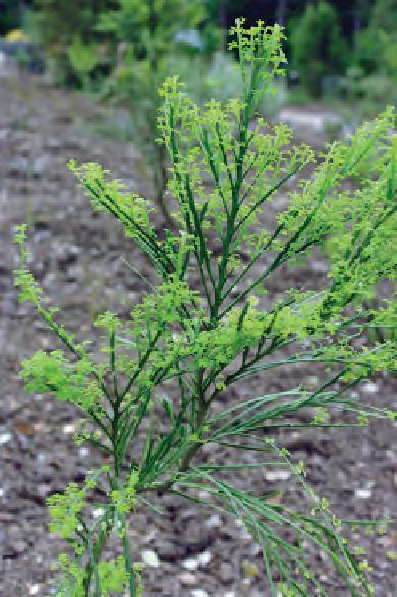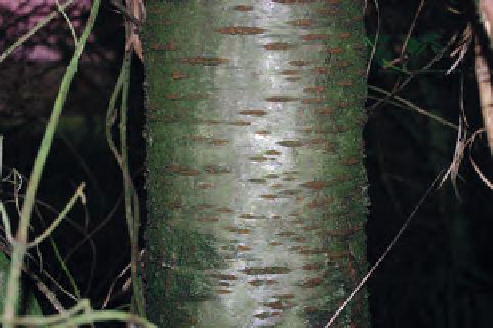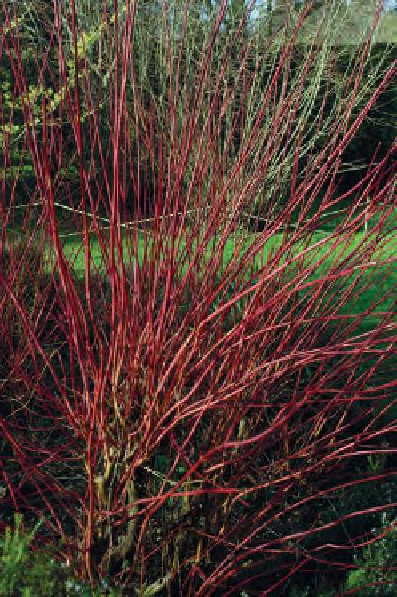Agriculture Reference
In-Depth Information
Figure 7.5
Photosynthetic stems
Figure 7.7
Red stem colour in dogwood (
Cornus alba
'Sibirica')
In some plants, leafy structures called
stipules
may
be found at the base of, or attached to, the petiole as
in
Rosa
spp. (Figure 7.12)
The arrangement of leaves on the stem is also
an important identifying feature (Figure 7.13). For
example,
Salix alba
has leaves arranged alternately
along the stem whereas
Cornus alba
leaves are
attached opposite each other. Leaves may also be
attached in whorls around the stem as in
Lilium.
The major morphological differences between
monocotyledonous and dicotyledonous roots, leaves
and stems are summarized in Chapter 4.
7
Figure 7.6
Lenticels in the bark of
Prunus
(cherry) tree
Leaves in the garden
X
Leaf vein
arrangement
is another important
feature of leaves. Parallel veination is a
characteristic of monocotyledons (Fig. 7.11i)
whereas dicotyledons have a wide variety of
veinations such as the pinnate arrangement
shown in Figure 7.11j and the palmate veination of
Geranium
leaves (Figure 7.11f ).
The novice gardener may easily overlook the
contribution that the shape, texture, venation,
colour and size of leaves can make to the general
appearance of a garden. Flowers are the most
striking feature, but they are often short-lived and
it is foliage which gives more permanent interest.
Considering leaf shape and size, the long
linear leaves of
Phormium tenax
(New Zealand
flax) contrast with the large palmate leaves of
Gunnera manicata,
while on a smaller scale, the
shade-loving hostas, with their lanceolate leaves,
mix well with the pinnate-leaved
Dryopteris filix-
In cultivated plants, leaf size and shape, colour (Figure
7.11k) and variegation (see Figure 9.3) are also
important identifying features since many cultivars
have been bred to differ from the original species in
these respects.







